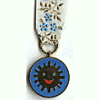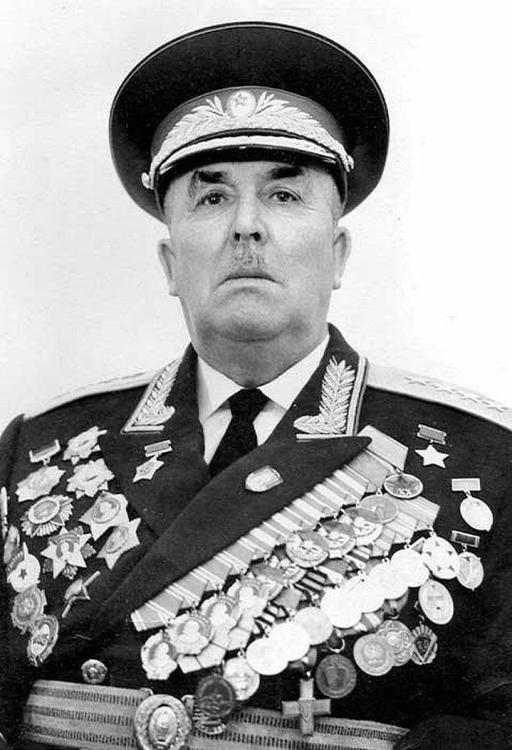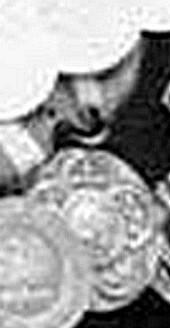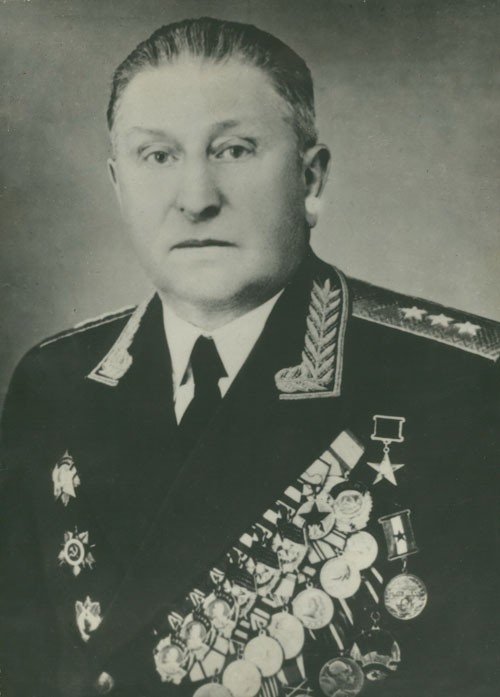-
Posts
679 -
Joined
-
Last visited
-
Days Won
2
Content Type
Profiles
Forums
Blogs
Gallery
Events
Store
Everything posted by Lukasz Gaszewski
-
It is not Polish, it is Austrian, namely from the Tyrol. It is the Pater-Haspinger-Medaille of the Bund der Tiroler Schützenkompanien, for 15-year membership. It is the Tyrolean eagle, albeit indeed very similar to the Polish one. Regards
-

Polish Army medal, real or copy?
Lukasz Gaszewski replied to Sampo's topic in Central & Eastern European States
Certainly a copy. Look at the "cloudy" surface of the reverse. I guess it was cast from an original medal rather than struck. To make you happier I will tell you that some recipients wore similar replicas instead of the original medals. -
I am not insisting that it is from Czechoslovakia, I am only saying that some details point out it can be. Please note that such circles with the country lands' coats of arms can be found in the Czechoslovak war crosses as well. Also the reverse of the pre-WWII Order of the White Lion holds such coats of arms and the intertwined "CS" letters. And I am sure, too, that if it is Czechoslovak, it is nothing official and most likely issued very soon after the war. Unfortunately the photo is too blurred to see more. And something that has come to me right now: and what if it is the reverse of the medal?
-
Thank you very much for all your responses. I haven't been here for a while. I am still unable to identify the decoration, but I have done some further research, which (hopefully) will finally help identify it. First, I have found out that the same decoration was conferred to another Soviet military leader, general Ivan Fedyuninsky (1900-1977). Enclosed are the ribbon bars from Fedyuninsky's jacket. The ribbon of the said decoration is the one before last, just before the Czechoslovak "Brotherhood in Arms" medal. I have also found an official photo of Fedyuninsky and been able to isolate the decoration, which is a fairly large round medal. Unfortunately, the quality of the photo does not allow to see many details, still it has a large circle in the middle, surrounded by five smaller circles. Judging from the fact that it is next to another Czechoslovak medal, I am more and more convinced that it is from Czechoslovkia as well. The five small circles may represent the five historical country's lands: Bohemia (Czechia), Slovakia, Silesia, Moravia and Carpathian Ruthenia (which they were forced to cede on the USSR after the war). That something within the upper circle may look like the Slovakian coat of arms and there can be intertwined "CS" letters inside the central circle. Hope this may help. Good luck in further hunting!
-

Polish Legion Badge
Lukasz Gaszewski replied to Mark McM's topic in Central & Eastern European States
A cute badge of the Association of Polish Legionnaires. The hallmark denotes 875 silver and if there is a 'W' next to the maiden's head, the piece was made after 1930. -
Thanks for the response. Yes, I did consult the Russian Wiki, with poor results though. The information has errors regarding other Katukov's awards, too (which is quite typical of Wiki), for example there are incorrect classes of his Polish orders, or no information that he was awarded both the 2nd and 3rd class the Order of the Grunwald Cross, and of course nothing about the mysterious ribbon. My tentative guess is that it can be a decoration of some African, Middle Eastern or Latin American country, which used to 'flirt' with the USSR in 1960s and 1970s, but so far I have been unable to find any.
-
I am not sure if this is the most relevant section, but I cannot think of where else to put it. Here are the ribbon bars of Marshal of Tank Forces Mikhail Katukov from his uniform of early 1970s. I am trying to identify the ribbon marked with the red ellipse. Maybe somebody can help. I will owe a lot.
-
Mmmm, traditionally I am coming too late - wish I had seen your post earlier :( I wonder what the blue ribbon with white edges (fourth in the before last row) could be from.
-

A happy Egyptian couple in the 1970s
Lukasz Gaszewski replied to ChrisW's topic in Middle East & Arab States
Am I right to see also the ribbon of the Sinai Star on the top of his ribbons? -
A beautiful Cuban Order of Solidarity. Great acquisition indeed, I truly envy. I have been looking for it for a long time. Below you can find the list of the ribbon bars from your photo. The remaining three are unknown to me at the moment, but they are most probably Czechoslovak as well. The tunic certainly belonged to a high-ranking Czechoslovak military and comes from the 2nd half of 1980s. Order of Lenin (USSR) Order of Victorious February (CSSR) Order of Red Star (CSSR) Order of Labour (CSSR) Order of Scharnhorst (GDR) Order of Ho-Shi-Minh (Vietnam ?) Order of Solidarity (Cuba) Medal for Defense of the Homeland (CSSR) Medal for Strengthening Brotherhood in Arms 2. Class (CSSR) Medal for Service to the Homeland (CSSR) Medal "Brotherhood in Arms" (USSR) Medal "Brotherhood in Arms" 1. Class (GDR) Commemorative Medal - 50th Anniv. of Founding Czech Communist Party (CSSR) Commemorative Medal - 25th Anniv. of Victorious February (CSSR) National Security Corps Medal (CSSR) Commemorative Medal - 30th Anniv. of Liberation by the Red Army (CSSR) Commemorative Medal - 40th Anniv. of Liberation by the Red Army (CSSR) Jubilee Medal "60 Years of AF USSR" (USSR) Medal "40 Years of Victory in the Great Patriotic War 1941-45" (USSR) Medal "30 Years of Bulgarian People's Army" (Bulgaria) Medal "40 Years of Socialist Bulgaria" (Bulgaria) 30th Anniversary of National People's Army Medal (GDR) 30th Anniversary of Revolutionary Armed Forces Medal (Cuba) ??? Medal of the Association of Antifascist Fighters (CSSR) ??? Medal "90th Anniversary of Georgi Dimitrov's Birthday" (Bulgaria ?) ??? Medal "1200 Years of Kiev" (USSR) Decoration of Liberated Political Prisoners (CSSR) Ministry decoration (CSSR) Ministry decoration (CSSR)
-

Ribbon bar of Admiral Wilhelm Ehm
Lukasz Gaszewski replied to webr55's topic in Germany: Post 1945: Bundesrepublik & DDR
My pleasure! There is one more hint that Ehm's photo was taken closer to 1977 (probably soon after his promotion to full admiral). On the photo he is wearing the ribbon of the early type of the Ehrentitel Verdienter Angehöriger der Nationalen Volksarmee (last in the second row). Apparently he was in the first group of military awarded with that decoration. The Ehrentitel was established in 1975, but already in 1977 its form changed completely and the recipients were requested to replace it with the new medal. -

Ribbon bar of Admiral Wilhelm Ehm
Lukasz Gaszewski replied to webr55's topic in Germany: Post 1945: Bundesrepublik & DDR
Hello, with all respect, IMHO the identification of the Cuban Order of Ernesto Che Guevara is incorrect. Unfortunately, I do not have the complete list of Ehm's awards, still the photo of the admiral, taken between 1977 and 1978 (and the dating of the photo seems correct) can be helpful here. The photo depicts Ehm already wearing the ribbon of the said order. In fact, (leaving aside ribbon width) it cannot be the Order of Che Guevara, as it was established only in December 1979, i.e. 1-2 years after the photo was taken! So if not the Order of Che Guevara, what then can it be? IMO it is the Yugoslav Order of Military Merit 1st Class. In 1960s and 1970s several high-ranking DDR military were awarded with that order. It is possible that Ehm was one of them. The width of the ribbon also goes well with it. See here. -
Hi Kevin, top row: Large Silver Medal for Bravery (Austro-Hungary) Small Silver Medal for Bravery (Austro-Hungary) Bronze "Signim Laudis" Medal (Kingdom of Hungary) Charles Troops Cross - for front service (Austro-Hungary) WWI Commemorative Medal f. Combatants (Kingdom of Hungary) middle row: Wound Medal w. ribbon f. 2 wounds (Austro-Hungary) and badge for war disabled on it (Kingdom of Hungary) National Defense Cross (Kingdom of Hungary) bottom row: WWI Commemorative Medal f. Combatants (Austrian Republic) WWI Commemorative Medal (Kingdom of Bulgaria) Return of Transylvania Commemorative Medal (Kingdom of Hungary) Return of Upper Hungary Commemorative Medal (Kingdom of Hungary) below shield: Decoration of Hero (Vitez) (Kingdom of Hungary) - I believe it should be placed higher, as it was a highly respected Hungarian military award. Unfortunately the photo is too small to see your great grandfather's rank. A-H bravery medals were awarded to non-commissioned ranks, but the "Signum Laudis" suggests he was subsequently promoted to officer in the Kingdom of Hungary.
-

Polish WW2 & Later Medal / Badge Group
Lukasz Gaszewski replied to vladtheman03's topic in Central & Eastern European States
Hi, your identification is generally correct. I will allow myself to add my two bits. The silver multi-rectangular badge is the decoration of merit to the construction and construction materials industry. The oval one is a commemorative one from a trade unions congress. What regards the BPS badge, the abbreviation comes from 'Brigades of Socialist Labour.' In short, teams of workers declared they would expand the labour plan by so and so much, and depending on how much they succeeded they got the decoration in gold, silver or bronze + usually a bonus of free holidays, refrigerator or tv-set. I believe teams like that were popular in other countries of the bloc as well. The eagle is a contemporary collar badge, worn by general officers today. No idea how it found itself with the other badges. Although fairly popular, the Grunwald Badge is perhaps the most interesting of all badges here. It roughly corresponds to US CIB and means that the recipient served on the front. And one more thing: the silver medal on the right commemorated not the 20th but the 10th anniversary of the republic. It was established in 1954. I tried to identify the guy, but the name is too popular. Even the double name did not give any results. -

Fake Socialist Yugoslavia Fakes!
Lukasz Gaszewski replied to paja's topic in Southern European & Balkan States
You can always try your luck, contact seller and offer your price. It works sometimes. The seller chose the "buy it now" option, which may suggest he is open to negotiations. Good luck! -
Hi, these are the unit badges of 65th Infantry Regiment. During the Korean War it was within 3rd Infantry Division, which goes well with the medals and other insignia on display. https://en.wikipedia.org/wiki/65th_Infantry_Regiment_(United_States) Best, Lukasz
-
Nice... The first is the Cross of Deported to Siberia, a state-awarded decoration of 2003, conferred to Polish citizens deported into the USSR (not only to Siberia), following the Soviet attack on Poland of September 17, 1939. The second is a Cross of Merit of the Association of the Deported to Siberia, an organizational award.
-
I have looked into my sources. There were 112 recipients (24 Poles and 88 foreigners) between 1921 and 1939. Some sources say 111, as one (Stanislaw Car, awarded posthumously in 1938) is not always included. I have not found any source which would prove that kings Fuad and Farouk, as well as Camillo Perini were ever awarded. With Göring, there was a rumour a few years ago, made by a Polish journalist who insisted that Göring was would be awarded in 1936, but the award was kept secret (!) after the war. Later on, it turned out that he simply mistook the Yugoslav Order of the White Eagle (which Göring indeed did have) with its Polish counterpart, but the affair started living its own life. What regards Mr Wesolowski's book, I have no idea where he got his 95 recipients from. Wesolowski did a great thing, as he was probably the first person who wrote about Polish orders and medals in English. The bad thing about him is that he did not bother to update his figures in subsequent editions, even when access to the sources was facilitated.
-

New book on Egyptian orders and medals
Lukasz Gaszewski replied to ChrisW's topic in Middle East & Arab States
I got my copy this month and I must admit I am very glad I have it. Although most of the decorations described in the book are not alien to me, there are some I had no idea of. Certainly, I can imagine that the book might contain more information, especially about recipients, still it is probably the most complete work on the historical and contemporary orders and medals of Egypt so far. The edition is excellent, all pictures are big and although collected from different sources, their quality is more than satisfactory. Of course if you want to use the book as a reference, not only as a source of pictures, the knowledge of at least basic Arabic is a must. A summary in English would certainly be an asset. Anyway, my big respect to the author for a really good job indeed! I am not disappointed and I can recommend the book to all interested in Egyptian honours. What regards the stamps on the envelope, I Iiked them very much. I wonder if somebody had a closer look on who they depicted. It is the late Pope Shenouda III, the Pariarch of the Coptic Orthodox Church of Alexandria. To me these stamps are one more proof that Egypt can take well from the richness of its history and cultural heritage. -

Hungarian Order of Merit- Query
Lukasz Gaszewski replied to P.F.'s topic in Central & Eastern European States
Hello, Your question is difficult to answer in just one sencence, as the Hungarian Order of Merit (Cross of Merit until 1935) was awarded for the period of over 20 years, from 1922 (practically 1923) to 1944, and its size varied. Generally, what regards the crosses of the upper classes, they were as follows: - Grand Cross: 1922-30 - 60 mm, 1930-39 - 62 mm; then with the establishment of the class of GC with the Crown of Hungary in 1939, the so-far 1st class was renamed to Grand Cross, with the badge usually 53 mm, but larger, even up to 57 can be found as well. - Cross 1st Class (sash decoration but smaller than that of GC): 1922-30: 51 mm, 1930-39 - 53 mm; after 1939 no longer in use. - Grand Officer (called actually Cross 2nd Class with Star and from 1935 Middle Cross w. Star): 1922-30 - 50 mm, then 52-53 mm. - Commander (Cross 2nd Class and from 1935 Middle Cross): as above. A few years ago I published an exhaustive article about the Hungarian Order of Merit at JOMSA (2/2012). I think you will find there all details you need. Regards, Lukasz -
Yes, it is Polish. A few (minor) comments on this bar. 1. The wound decoration is for a single wound. A second would be denoted by another star. 2. The first ribbon in 2nd row is definitely BEM. The ribbon of the order is wider. 3. The two identical ribbons are from two different classes of the Cross of Merit (probably silver and bronze). Gold and silver laces to denote class were first introduced after the war, only in Poland. Emigration never used them. 3. The last in 2nd row can be of the Medal of Merit of the Primate's of Poland Emmigrational Representative, as Irish Gunner said, or another unofficial church medal. Certainly hand-made. 4. He is also right to say that the long service medal for 30 years was never officially awarded, but I believe some may have been made by the self-styled president Nowina-Sokolnicki. This can be one of them. The other two can be from him too. No idea what the two crosses can be for. Ribbon bar holders perhaps? The post should be moved to the Polish section. Unfortunately I have no rights to do so. Happy New Year! Lukasz
-
Hi, The tunic comes certainly from the 2nd half of 1960s - there is already the medal for 20 years of victory over Germany of 1965, but it is lacking the medal for the 50th anniversary of Soviet Armed Forces of 1968. It is not always possible to identify the owner of a uniform but this time I am pretty sure who it belonged to. IMHO it was owned by Col. Gen. Pavel Alexeyevich Kabanov (1897-1987), who during the war served in the railroad forces and after the war was the head of them. Please have a look at these two photos I have found. On the first, from the early 1960s Kabanov has 3 Orders of Lenin, 3 Orders of Red Banner, Order of Kutuzov 1st class, Order of Patriotic War 1st class, only one Order of Red Banner of Labor and practically the same set of Soviet medals that can be found on the tunic. He is also wearing the three medals of Czechoslovakia which are on the tunic and a medal which I cannot identify now (though I am sure I have seen it before) and which matches well the blue-white-red ribbon. The second photo from 1970s, depicts the general already with 4 Orders of Lenin and two Orders of Red Banner of Labor and I belive there is also the medal for Defense of the Caucasus, which is missing on the first photo. Although Soviet railroad troops wore green piping, I belive it did not regard generals. Unfortunately Kabanov does not have an entry in the English Wikipedia, so here is a link to Russian Wiki, which I hope may help: https://ru.wikipedia.org/wiki/%D0%9A%D0%B0%D0%B1%D0%B0%D0%BD%D0%BE%D0%B2,_%D0%9F%D0%B0%D0%B2%D0%B5%D0%BB_%D0%90%D0%BB%D0%B5%D0%BA%D1%81%D0%B5%D0%B5%D0%B2%D0%B8%D1%87 So it was a great acquisition indeed! Kind regards - Lukasz








